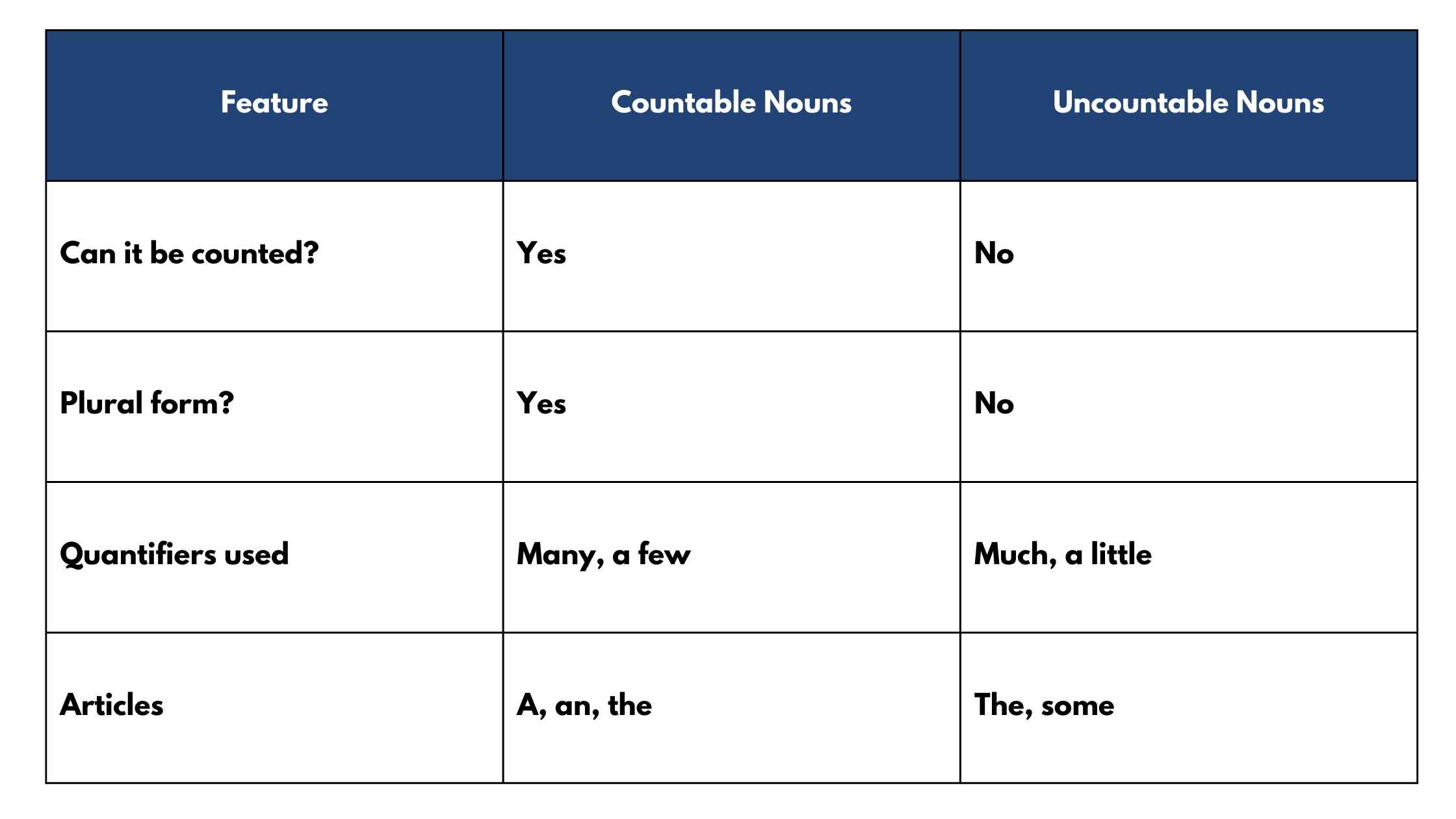
It can be hard to distinguish between countable and uncountable nouns at first, but the difference is actually pretty straightforward. In this lesson, I’ll explain what these types of nouns are, how to use them correctly, and how to avoid common mistakes. By the end, you’ll feel confident identifying and using countable and uncountable nouns in your writing and speech.
What Are Countable Nouns?
Countable nouns refer to things that can be counted as individual units. They can appear in both singular and plural forms, which allows us to talk about one item or many.
Examples of Countable Nouns:
Singular: a book, a chair, a dog
Plural: books, chairs, dogs
These nouns can be paired with numbers or quantifiers like "many" and "a few."
Examples in Sentences:
Singular: "I found a coin on the street."
Plural: "She owns three cars."
Singular countable nouns often require an article ("a" or "an") when used in a general sense.
What Are Uncountable Nouns?
Uncountable nouns refer to things that cannot be counted as separate items. They often represent substances, concepts, or abstract ideas. Unlike countable nouns, they do not have a plural form.
Examples of Uncountable Nouns:
Substances: water, oil, flour
Abstract ideas: knowledge, freedom, advice
We use quantifiers like "some," "much," or "a little" to describe uncountable nouns.
Examples in Sentences:
"Can I have some milk, please?"
"There isn’t much information about the topic."
Since uncountable nouns cannot take "a" or "an," we use terms like "a piece of," "a glass of," or "a bottle of" to quantify them.

📚 Join The Basics of English Course! 🚀


